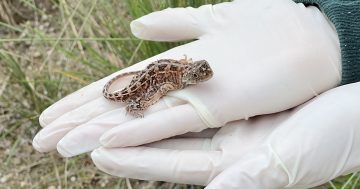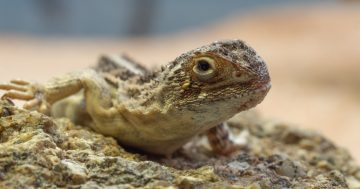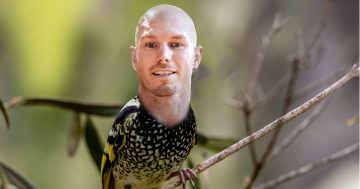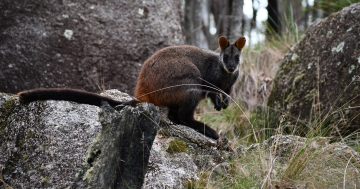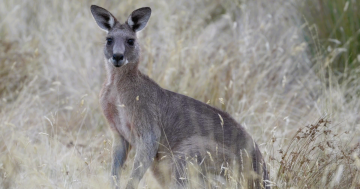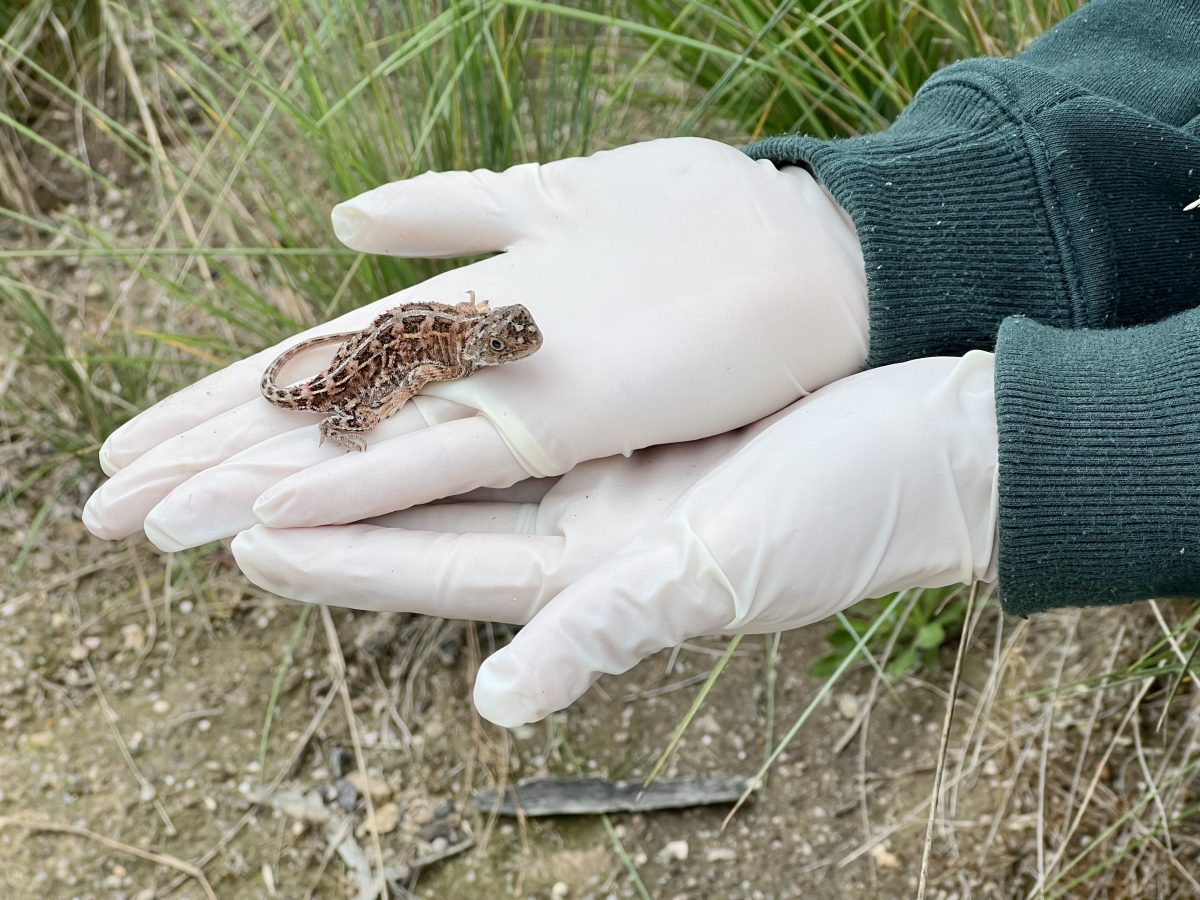
Earless Dragons at the Tidbinbilla Nature Reserve. Photo: James Coleman.
They might look like someone has really let the vegetable patches go, but in reality, the new ‘ring-tank’ enclosures at the Tidbinbilla Nature Reserve are very scientific.
They’re the next step in bringing back Canberra’s lizard species from the brink of extinction.
The Canberra Grassland Earless Dragon (Tympanocryptis lineata) is so named because it’s from Canberra, lives in grassland and lacks sticky-out-y ears, not because it’s a Targaryen’s fire-breathing pet.
They also only grow to be no more than 150 millimetres long and five to nine grams in weight.
The species was only formally recognised in 2019 but has been nationally listed as endangered ever since as more and more of their natural habitat falls victim to development.
In 2021, the ACT Government doubled down on efforts to bring the mini dragons back and paired up with the University of Canberra (UC) and the Melbourne Zoo to launch a laboratory-style breeding facility in the ACT’s south-side nature reserve.
The idea was to learn as much as possible about the species in captivity so an “insurance population” could be safely reintroduced into the wild.
Two years of careful construction and landscaping later and 40 of the dragons have taken the next step and moved into an open-air, predator-free ‘share house’.
“Australia is facing an extinction crisis,” ACT Minister for the Environment Rebecca Vassarotti said at the official opening ceremony on Thursday (24 February).
“If we are to halt and reverse the damage we’re doing to our natural environment, we must challenge ourselves and test and trial approaches to tackle extinction rates and reintroduce native fauna back into the wild.”
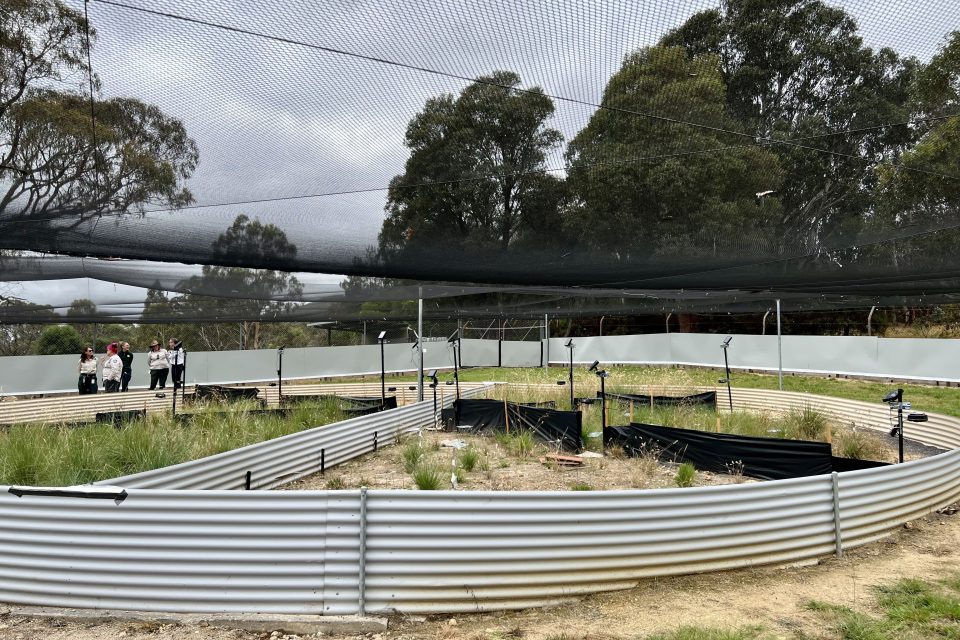

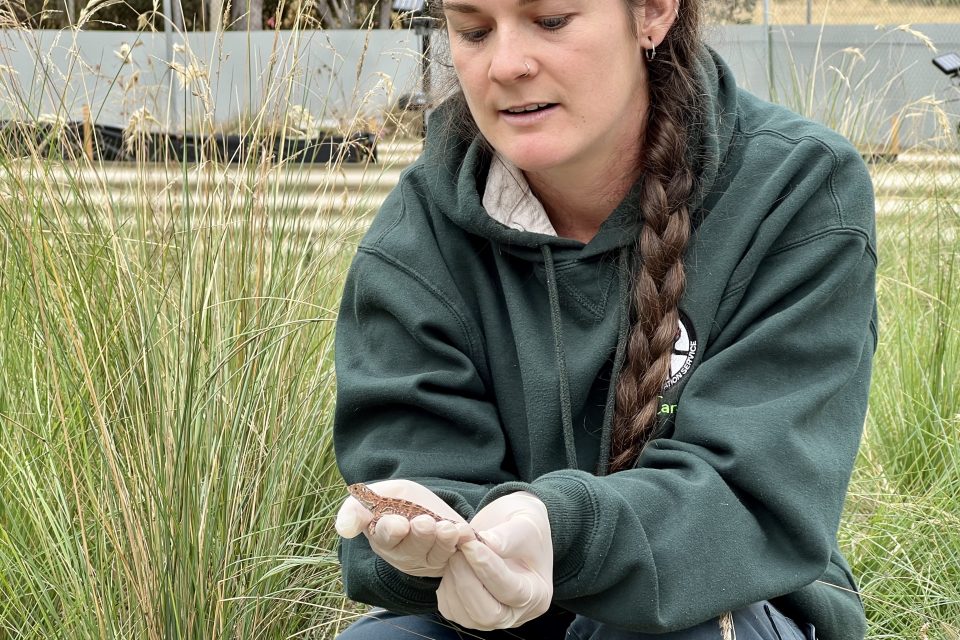
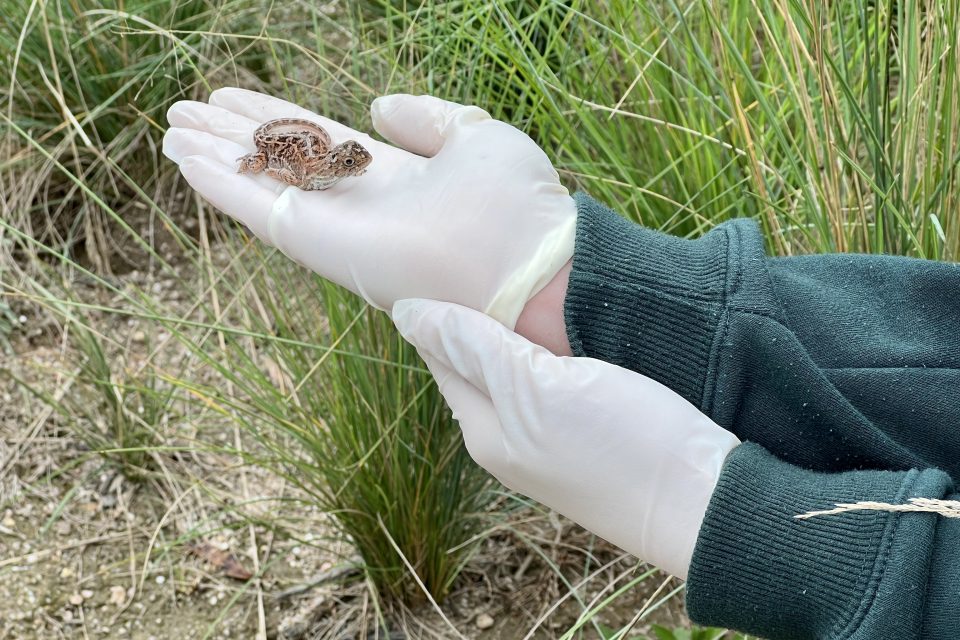

The original 12 adult males and 15 females have been busy in their two years at Tidbinbilla and spawned 30 offspring. These, together with 10 from the Melbourne Zoo, now fill the two tanks to make for a total of 40 (although one has since died).
Boundaries of tin and plastic sheeting divide the tanks into four different habitats, varying in their levels of vegetation from dense to sparse. The idea is to see how the dragons get on in each.
“These ring tanks … have been established to provide controlled areas for ecological and behavioural research,” Ms Vassarotti said.
“They include 50 artificial burrows to mimic natural habitat and small water bodies that will attract insects for the dragons to eat. Ecologists will monitor the dragons very closely to ensure they remain healthy while they reduce the supplementary food and encourage natural hunting.”
The Threatened Species Officers and other volunteers at Tidbinbilla will manage the colony, taking advice from UC and the Melbourne Zoo on feeding, breeding and more.
They’re hoping to answer the question, “What conditions are required to enable the dragons to thrive in Canberra’s grasslands in the face of urbanisation and climate change?”
“The establishment of the earless dragon ring tanks at Tidbinbilla will enable behavioural research into the dragons,” UC Professor Stephen Sarre says.
Provided they pass the share-house test with flying colours and “increased disease resistance and drought tolerance”, the endgame is to reintroduce the dragons to the wild.
Ms Vassarotti says, “we still have a lot to learn about the species”.
“This program is helping us understand more about their genetics, behaviour, breeding habits and ecology, including complicated relationships with other species such as the Canberra Raspy Cricket and Wolf Spiders.”
More research on the dragon’s habitat use and interactions with wolf spiders is due to start in late September.












